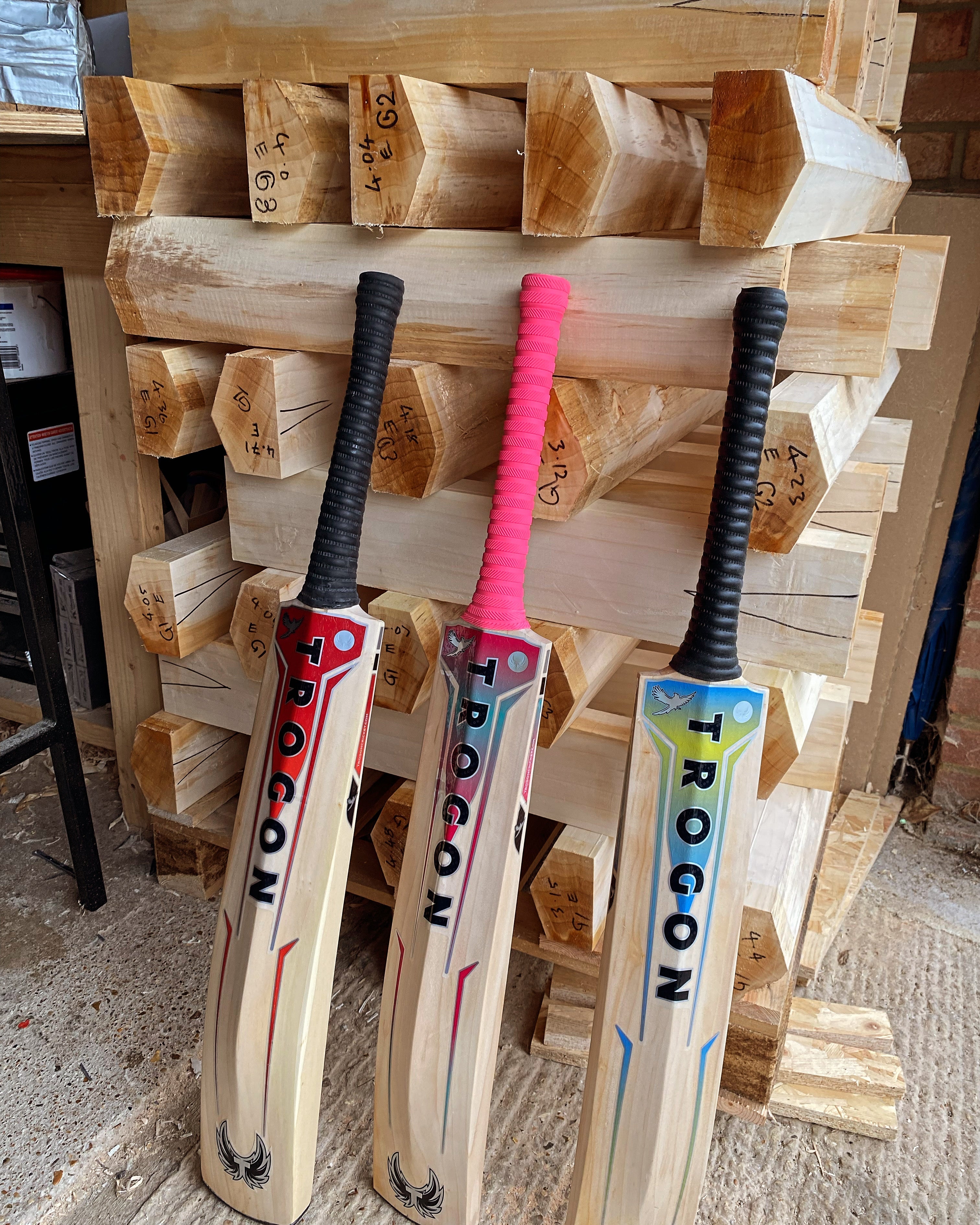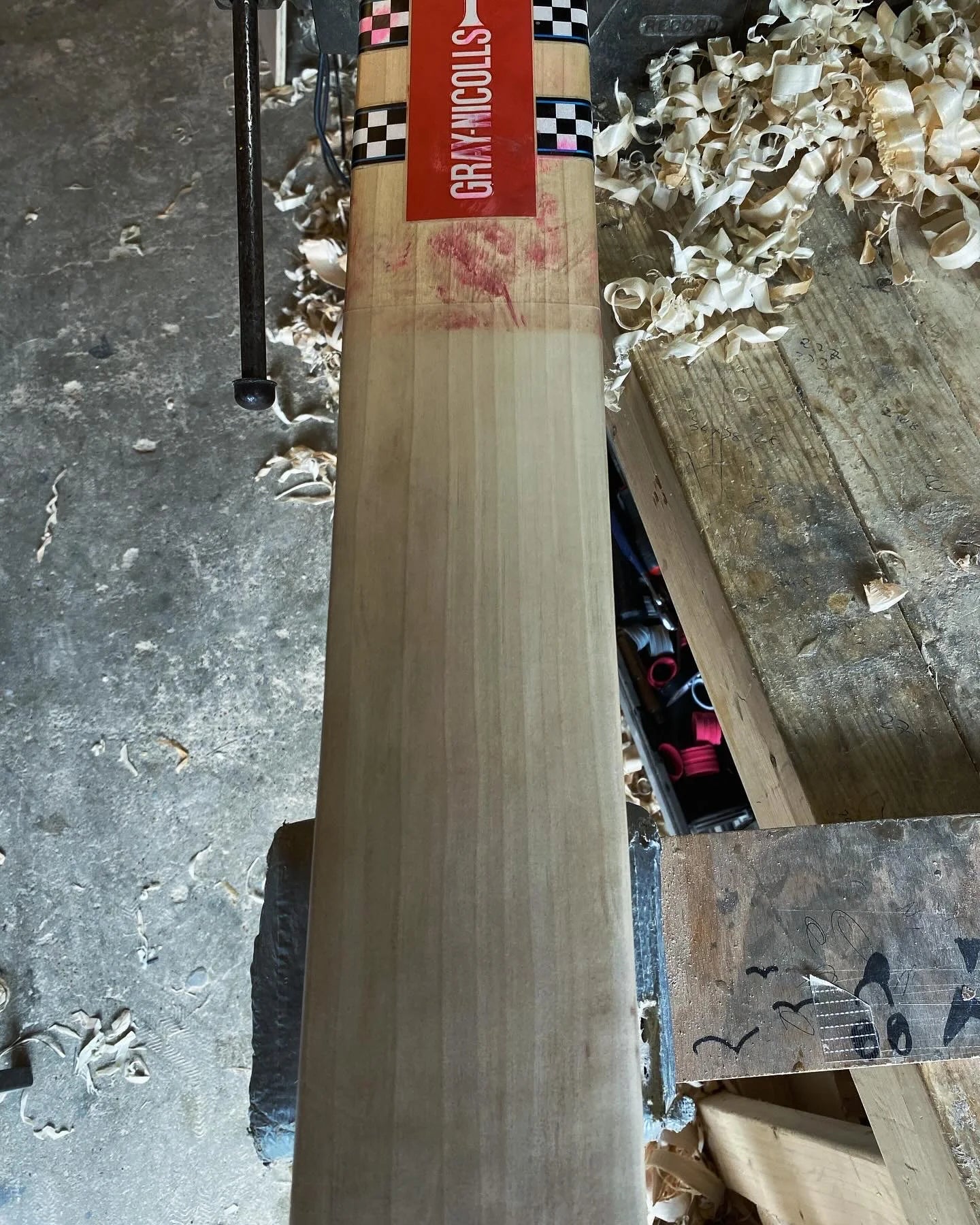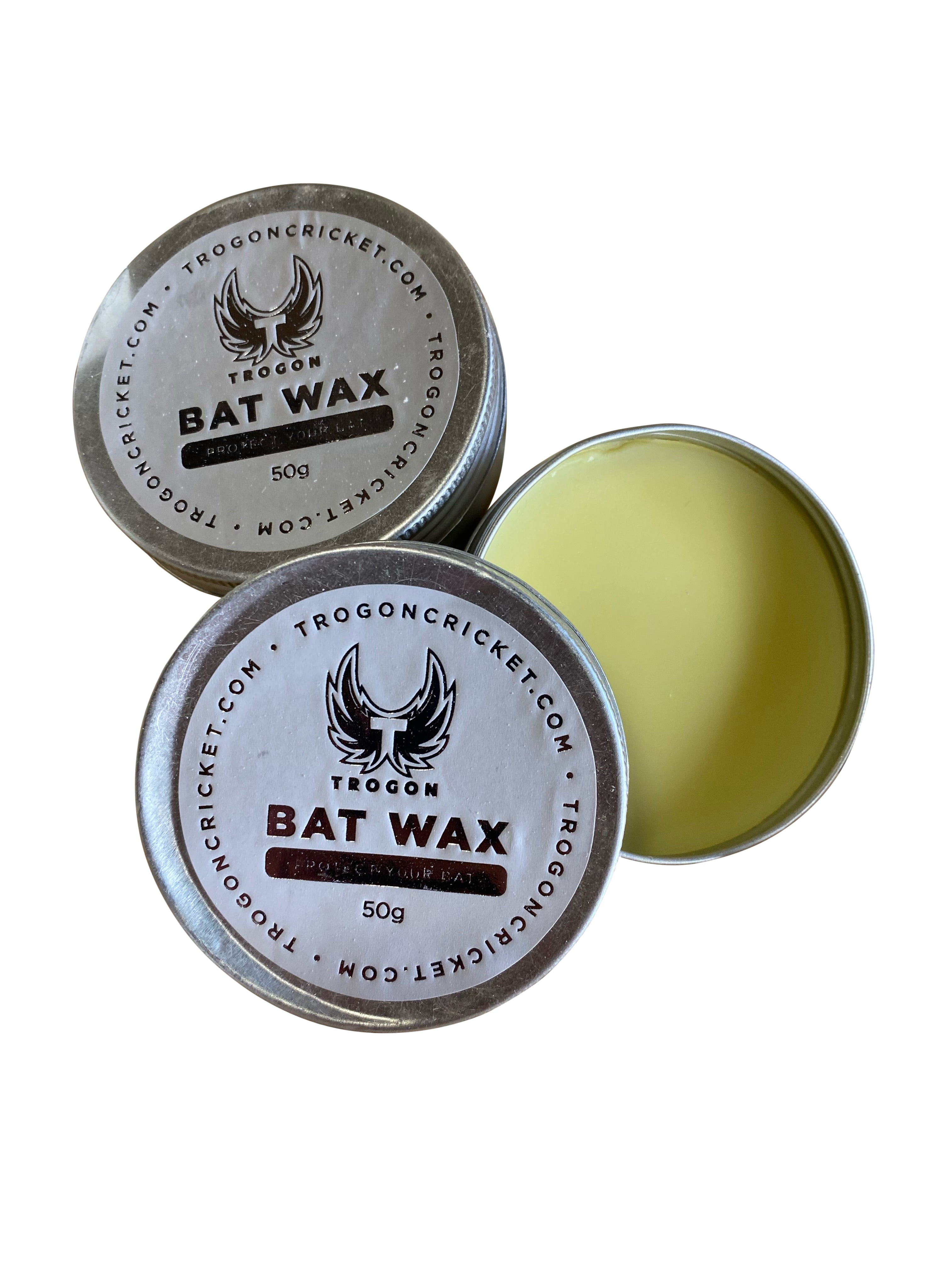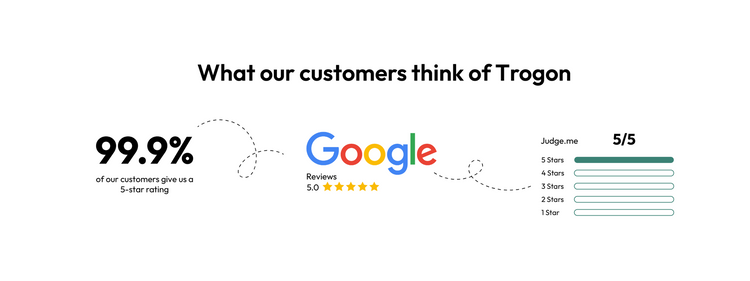Cricket enthusiasts and players invest a significant amount of care and affection into maintaining their cricket bats, treating them almost like cherished companions. I've always been the same. When I was younger, I took my new bat to bed!
Despite this meticulous attention, the appearance of cricket bat cracks can be an unsettling sight, but don't run out and buy a new bat just yet. There are options available to you.
With the right knowledge and approach, repairing cricket bat cracks can breathe new life into your prized wand, ensuring it continues to deliver the runs, no matter if it's a junior cricket bats or an adult cricket bat.
But, before we delve into all the nitty-gritty details, how do you fix cricket bat cracks?
To repair a cricket bat crack, clean the area around the crack. Apply wood glue into the crack, ensuring it's fully penetrated. Clamp the bat until the glue dries completely, usually 24 hours. For surface cracks, after glueing, apply bat tape for extra protection. Regular maintenance helps prevent further cracks.
Right, now continue reading to get all the facts about what to do with cracks on your bat.
Why Do Surface Cracks on Cricket Bats Appear?
Surface cracks on cricket bats are a common occurrence and can be attributed to several factors.
The primary reason is the nature of the game itself, with cricket bats designed to hit hard cricket balls (no surprise here). This repeated impact can cause wear and tear over time, resulting in cricket bat cracks. After all, cricket bats are made from a natural product and do have a life span. Some claim the life span is between 8k and 10k ball hits, but this is up for debate.
Other factors include exposure to extreme temperatures, improper storage (such as damp and moist garages), and using the bat without proper preparation, or if it hasn't been knocked in properly.
Improper storage might sound like a strange factor. Still, if, like most players at the end of a long, hard season, some dodgy decisions, a few ducks along the way, cricket bags end up in the cold garage for the winter months and are not seen again until the winter nets start, this is not the best prep for your trusty wand, and cracks can start to appear.
It's worth noting that here at Trogon, we offer a Full Winter Cricket Bat Repair Service where we get bats back to their best before the winter nets start.
Where Cracks Appear
Cracks in a cricket bat, including low sweet spot cricket bats can appear in several key areas, each affecting the bat's performance differently and also impacting its overall lifespan.
The toe, edges, face of the bat, and around the handle area on the splice are all susceptible to cracking due to the stresses and impacts they endure, especially for bats that have been made without enough wood left around the splice and the shoulder area.
- Toe: The toe of the bat is particularly vulnerable to damage from tapping at the crease and digging out yorkers, especially if you have a flat toe without rounded edges.
- Edges: The edges can develop cracks from off-centre hits, which are common.
- Face: The face of the bat may show surface cracks that develop over time due to repeated impact with the ball.
- Handle Area on the Splice: The area around the handle and the splice can weaken, leading to cracks, especially if the bat has been poorly handled.
Now, all of these cracks can be fixed if addressed quickly enough; if left unattended, they can deteriorate even further, making the repair job more challenging.
Can You Still Use a Cracked Cricket Bat?
The short answer is yes; in most cases, you can still use a cracked bat once it’s been properly repaired. Small surface or toe cracks are common, and with a bit of wood adhesive and tape reinforcement, your bat will be ready for action again.
However, playing with an unrepaired crack is a gamble. The vibration from repeated ball impacts can cause the damage to spread, turning what could have been a quick fix into a costly replacement. So, before heading back to the nets, ensure the repair has had time to set and the area feels solid.
Rule of Thumb for Repairs
A general guideline is that a crack up to two inches can typically be fixed using DIY methods; however, for larger cracks, it's advisable to seek professional help.
The good news is, there are bat manufacturers and maintenance companies equipped to handle more significant repairs, ensuring your bat returns to its optimal condition (ahem, did I hear the word Trogon Cricket Bat Repair) - there are other companies as well.
When Is a Cricket Bat Beyond Repair?
Even the best cricket bats eventually reach a point where repairs may not be worthwhile, as hard as that is to hear, it's true.
If your cricket bat has a full split through the splice, a cracked handle that moves when you grip it, or large sections of delamination (where the willow layers start to peel apart), then it may be time to say goodbye.
At this stage, the bat’s structural integrity has been compromised, which affects the overall performance. Minor surface or toe cracks, however, are perfectly normal and can be repaired quickly and easily, so don’t panic at the first sign of wear.
DIY vs Professional Cricket Bat Repairs
When it comes to repairing cricket bat cracks, the temptation to fix things yourself is understandable: a bit of glue here, a clamp there, and you’re back in the game.
For small, hairline cracks, that approach can work fine if done carefully. However, for deeper or structural damage, professional bat repair is always the safer route.
A professional bat maker has the tools, experience, and, most importantly, the eye to spot hidden damage that DIY fixes might miss.
At Trogon, we regularly receive bats that were “fixed” at home but later developed larger issues because the repair wasn’t done correctly. If in doubt, it’s best to let a professional take a look.
Cricket Bat Repair Options
Before embarking on a professional cricket bat repair company, below are some simple repair tricks you could try, but be warned, they could make things worse in the long run if you don't know what you are doing.
Small Cracks
For small cracks in a cricket bat, a simple PVA or other wood adhesive can be effective. This process involves inserting glue into the crack and allowing it to dry thoroughly.
Following this, applying bat tape—a reinforced and enhanced type of tape—can offer additional protection. This method is a form of reconditioning and refurbishing that can extend your bat's lifespan.

The above image shows a really nice bat that came into the workshop for a full cricket bat service. This picture was taken before the full service and is a good example of small surface cracks.
Can Oiling Fix a Cracked Bat?
It’s important to understand that oiling can’t repair a crack that’s already formed. Linseed oil or wax helps maintain the natural moisture within the willow, preventing it from drying out and cracking in the first place, but it’s not a cure for existing damage.
If your cricket bat is already showing cracks, repair it first with glue and clamping, then apply a light oil or wax to protect the repaired area and keep the wood supple.
Bigger Cracks
More substantial cracks in a cricket bat may require extensive treatment, such as a new handle or professional reconditioning.
These options help restore the structural integrity and performance of your bat, ensuring it's fit for the game.
Sometimes you can try to fix these with PVA glue and clamping; they might last for another game or two, but if a new handle is required, that does require a professional who has the right jig.

The above image shows my re-handling jig. This jig cuts the handle into a splice V shape. I wouldn't try this at home; it takes months, if not years, of practice to get the jig(s) correct.
How Long Should a Cricket Bat Last?
A good-quality English willow cricket bat typically lasts anywhere from one to five seasons, depending on how often it’s used and how well it’s maintained. On average, you’ll get around 8,000 to 10,000 ball impacts before natural fatigue starts to show, though some bats go well beyond that with proper care.
Factors such as playing conditions, the type of balls used, and even weather exposure can influence the lifespan; however, most importantly, how the cricket bat is looked after during the off-season. If you leave it in a cold, damp garage all winter, it won't last very long.
Bats that are oiled regularly, stored correctly, and given a full winter service tend to last much longer than those left forgotten in a damp garage.
Buying a Bat That Won’t Break
It's nearly impossible to find a cricket bat that won't eventually succumb to wear and tear; anyone who claims otherwise is not being truthful.
As mentioned above, a cricket bat typically has a lifespan of between 8,000 and 10,000 hits. Regardless of the manufacturer, all bats will show signs of use over time, after all, it's a natural product!
However, at Trogon Cricket, we stand by the quality of our products, and all our bats come with a 1-year warranty, covering repairs or replacements due to cricket bat cracks, free of charge.
Advantages of buying a Trogon Cricket Bat
-
Durability and Longevity: Trogon cricket bats are crafted from high-quality English willow, ensuring they withstand thousands of hits. With a robust pressing and construction process, our bats are designed to last.
-
Warranty Coverage: Every Trogon cricket bat comes with a 1-year warranty, providing peace of mind to players. If any cracks or damages occur within this period, Trogon offers free repair or replacement, ensuring your investment is protected.
-
Preparation and Protection: Trogon offers bats that are pre-knocked in, reducing the risk of cracks and damages from the get-go. Additional options, such as anti-scuff sheets and toe protectors, are available to enhance the bat's durability and performance.
-
Customisation for Performance: Trogon specialises in hand-made bats tailored to individual playing styles and preferences. This customisation ensures optimal balance, weight distribution, and middle positions, enhancing the player's performance on the field.
-
Affordability and Selection: With a wide range of grade 1, 2, & 3 English willow clefts, Trogon caters to all budget requirements without compromising on quality. Players can choose the perfect bat to match their skill level and financial constraints.
If you have recently purchased a new bat from Trogon to activate the warranty, you need to register the bat using the QR code on the thank-you note.
Preventing Cracks
The best way to prevent cracks in a cricket bat is through proper preparation, such as knocking in and caring for the bat during the off-season.
For all new cricket bat orders, Trogon Cricket offers a knocking-in service to ensure your bat is game-ready, minimising the risk of damage.
Additionally, protecting your bat with anti-scuff sheets and a toe protector—available with every Trogon bat purchase—can further safeguard against wear and tear.

The above image shows two bats I provided with full winter service. One of the bats had numerous surface cracks, so I used extra-tech face protection. The other bat didn't have any cracks, so I used an anti-scuff sheet and extra edge tape. Both offer great additional protection.
How to Store Your Cricket Bat to Prevent Cracks
Where and how you store your bat during the off-season can make a massive difference to its condition. Store it in a cool, dry place, away from damp areas such as garages, airing cupboards, or the boot of your car.
Avoid direct sunlight and extreme temperature changes, which can cause the willow to dry out or warp. Ideally, rest the bat horizontally with the face facing upward, and apply a light coat of wax or oil every few months to help maintain its moisture balance.
Key Facts Around Cricket Bat Knocking-in
Knocking in a cricket bat is a crucial process to enhance its durability and performance.
Here are the key steps involved in the process:
-
Initial Preparation: Before starting, ensure the bat's surface is smooth. If necessary, lightly sand any rough areas (although if you have purchased a bat from us, there isn't going to be any). This preparation helps the knocking-in process be more effective by allowing the mallet's impact to be evenly distributed across the bat's surface.
-
Gentle Tapping: Using a special cricket bat mallet, begin by gently tapping the bat's face, edges, and toe. This gentle tapping hardens the wood, making it less susceptible to damage when it contacts a cricket ball. It's important to cover all areas, but to be particularly cautious around the edges and toes to avoid creating damage rather than preventing it. When knocking in the edges, you should knock in by glancing off the edges and not hitting them directly.
-
Increased Intensity: Gradually increase the force of the mallet strikes. The aim is to compact the wood fibers, thereby increasing the bat's resilience. This process should be done evenly across the bat's surface, paying close attention to ensuring the edges are rounded off to minimise the risk of cracks. This step might take several hours and should be spread over a few days to avoid overworking the wood.
-
Oiling: Before and intermittently during the knocking-in process, the bat should be lightly oiled with linseed oil or cricket bat wax, which you can buy from us. This helps maintain the wood's moisture levels, preventing it from drying out and becoming brittle. However, it's crucial to use oil sparingly to avoid saturating the wood, which can have adverse effects.
-
Practice with Old Balls: After the initial knocking-in with a mallet, it's beneficial to practice with old cricket balls. Begin with soft net practice, gradually increasing the intensity of your shots. This step helps the bat adapt to the impact of real balls, highlighting any areas that may require more attention.
Throughout these steps, patience and attention to detail are paramount. Rushing the knocking-in process or missing areas can leave the bat vulnerable to cracks and damage, shortening its lifespan and affecting performance.
Simple Ways to Prevent Future Cracks
In addition to knocking in and using protection sheets, there are a few everyday habits that can extend your bat’s life.
-
Avoid using cheap or hard practice balls that can damage the willow.
-
Rotate your bat occasionally during net and training sessions to even out impact areas.
-
Give your bat a quick wipe down after matches to remove dirt and moisture.
These small steps, combined with a proper winter service, can add years to your bat’s lifespan.
Conclusion
At Trogon Cricket, we understand the importance of a reliable cricket bat. Our commitment to quality and customisation ensures that we can repair and replenish all cricket bat sizes, reducing weight to suit your needs if required.
Our handcrafted bats cater to various shapes, sizes, weights, and middle positions, allowing for full customisation to meet individual requirements. With a vast selection of grade 1, 2, and 3 clefts of English willow, we offer customisation options to fit every budget, ensuring your bat not only meets but exceeds your expectations.
Whether you're facing cricket bat cracks or looking to craft the perfect bat, Trogon Cricket is your trusted partner on and off the field.
Playing Our Part in Your Cricket Story
We know that cricket is more than just a game; it’s a passion, a community, and a lifetime of memories. That’s why every Trogon bat is made with care, dedication, and pride. We see our role as more than just bat makers; we’re part of your cricket journey.
From the first knock in the nets to the biggest innings of your career, we want to be there with you.
Choosing Trogon means choosing a bat made with honesty, integrity, and the same love for the game that you carry to the crease.
Trogon Product Guarantee
When you buy from Trogon, you’re covered by our 6-month bat guarantee. If your bat cracks or breaks within that period and has been knocked in correctly, we’ll replace it with a new one, simple, fast, and hassle-free. Combine that with your statutory online protections, and you can shop with total peace of mind.






























